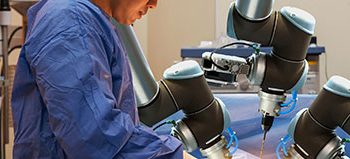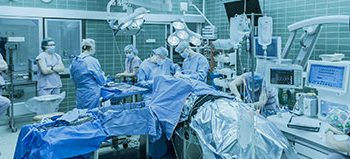Overview:
The study involved four major activities to estimate the current size of the laboratory centrifuges market. Exhaustive secondary research was done to collect information on the market and its different subsegments.
The next step was to validate these findings, assumptions, and sizing with industry experts across the value chain through primary research. Both top-down and bottom-up approaches were employed to estimate the complete market size. Thereafter, market breakdown and data triangulation procedures were used to estimate the market size of the segments and subsegments.
Expected Revenue Gains:
The laboratory centrifuges market is projected to reach USD 2.2 billion by 2026 from USD 1.8 billion in 2021, at a CAGR of 4.0% from 2021 to 2026.
Major Growth Boosting Factors:
The growth of this market is driven by increasing R&D investments and research grants; rising technological advancements and innovative rotor designs; increasing prevalence of infectious diseases leading to a higher volume of sample testing & cell-based research in laboratory centrifuges; and widening applications of laboratory centrifuges.
Download PDF Brochure@
https://www.marketsandmarkets.com/pdfdownloadNew.asp?id=197749088
“Equipment are expected to hold the largest share of the laboratory centrifuges market, by product in 2021.”
Based on product, the laboratory centrifuges market is segmented into equipment and accessories. In 2020, the equipment segment accounted for the largest share of the laboratory centrifuges market. The large share of the equipment segment can be attributed to the requirement of the repeated purchase of accessories such as tubes, bottles, and buckets.
“Benchtop centrifuges are expected to hold the largest share of the laboratory centrifuges market, by model type in 2021.”
Based on model type, the laboratory centrifuges market is segmented into benchtop and floor-standing centrifuges. Among these, the benchtop centrifuges segment accounted for the larger market share since these centrifuges are cost-effective, versatile, easy to use, smaller in size, and considerably lighter in weight. These advantages have resulted in their increased adoption in the laboratory centrifuges market.
“General purpose centrifuges are expected to hold the largest share of the laboratory centrifuges market, by intended use in 2021.”
Based on intended use, the laboratory centrifuges market is segmented into clinical, preclinical, and general purpose centrifuges. The general purpose centrifuges segment accounted for the largest market share in 2020, owing to an increase in cellular research and the diagnosis of blood-related diseases are the major factors driving the growth of this market.
“Fixed-angle rotors are expected to hold the largest share of the laboratory centrifuges market, by rotor design in 2021.”
Based on rotor design, the laboratory centrifuges market is segmented into swinging-bucket rotors, fixed-angle rotors, vertical rotors, and other rotors based on rotor design. The fixed-angle rotors segment accounted for the largest share in the laboratory centrifuge equipment market in 2020. Factors such as increasing protein research activities and advantages associated with fixed-angle rotors such as fast runtime and excellent resolution are driving the growth of this market.
“Diagnostics segment are expected to hold the largest share of the laboratory centrifuges market, by application in 2021.”
Based on application, the laboratory centrifuges market is segmented into diagnostics, microbiology, cellomics, genomics, proteomics, blood component separation, and other applications (biochemical analysis and nanotechnology research). In 2020, the diagnostics segment accounted for the largest share of the laboratory centrifuges market, owing to the rising prevalence of various diseases and the focus on ensuring early disease diagnosis are the major factors driving the growth of the laboratory centrifuges market for this application segment.
“Hospitals are expected to hold the largest share of the laboratory centrifuges market, by end user in 2021.”
Based on end user, the laboratory centrifuges market is segmented into hospitals, biotechnology & pharmaceutical companies, and academic & research institutes. The hospitals segment accounted for the largest share in the laboratory centrifuges market in 2020. The increasing prevalence of diseases, coupled with the growing awareness regarding early diagnosis & treatment, increasing demand for blood, availability of novel and technologically advanced centrifuges for blood separation, and growing number of hospitals, especially in emerging countries, are some of the key factors driving the growth of the laboratory centrifuges market for hospitals.
“North America commanded the largest share of the laboratory centrifuges market in 2021.”
Based on region, the laboratory centrifuges market is segmented into North America, Europe, Asia Pacific, and Rest of the World (RoW). In 2020, North America commanded the largest share of the laboratory centrifuges market. The large share of North America can be attributed to the rising R&D investments by government bodies, increasing emphasis on better management and the treatment of infectious diseases, and rapid growth in the pharmaceutical industry.
Request Sample Pages@
https://www.marketsandmarkets.com/requestsampleNew.asp?id=197749088
Key Players:
The major players operating in this market are Thermo Fisher Scientific, Inc. (US), Danaher Corporation (US), and Eppendorf AG (Germany), KUBOTA Corporation (Japan), Sigma Laborzentrifugen GmbH (Germany), NuAire (US), Sartorius AG (Germany), Andreas Hettich GmbH & Co.KG (Germany), HERMLE Labortechnik GmbH (Germany), Cardinal Health (US), Agilent Technologies (US), Centurion Scientific (UK), QIAGEN N.V. (Netherlands), and Bio-Rad Laboratories, Inc. (US).


